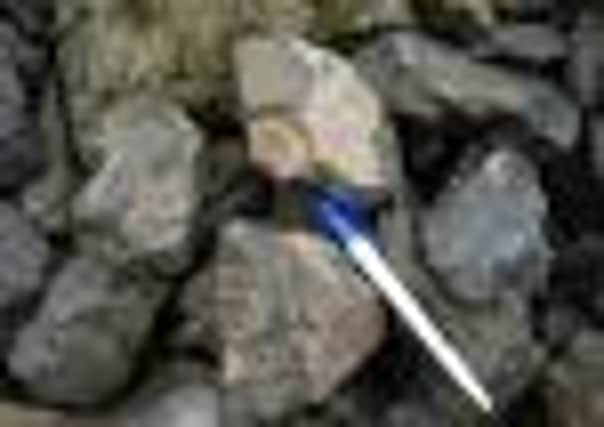Fossil looters raid ‘dinosaur isle’


It said the incident amounted to the worst example of reckless fossil-hunting in recent years.
The scene of devastation was discovered on Skye, known as “dinosaur isle” because of its rich and important fossil records.
Advertisement
Hide AdAdvertisement
Hide AdThe rock was ripped from cliffs near Bearreraig Bay in an apparent organised search for valuable fossils which may already be up for sale online.
SNH said the damage was the result of “irresponsible collecting by a selfish minority [that] is threatening this unique aspect of Skye’s natural heritage”.
It is thought the thieves used a crowbar to hack the rock and possibly sledgehammers to smash it to look for fossils.
The damage was first discovered in July.
It follows reports of rare dinosaur footprint fossils being removed from a Site of Special Scientific Interest (SSSI) at Valtos in Skye earlier this year.
SNH and police are investigating the incidents and are appealing for information.
Bearreraig Bay is also in a SSSI which includes important layers of fossils dating from the Jurassic period.
It lasted until around 145 million years ago and featured marine creatures such as ammonites – molluscs of the ancient oceans, living around the same time as dinosaurs and disappearing about the same time – and terrestrial animals including the carnivorous 12-metre dinosaur megalosaurus and the heavyweight vegetarians, the 16-metre long whale-like cetiosaurus and the armoured nine-metre long stegosaurus.
Any excavation and removal of rock needs permission from SNH as well as the landowner.
Advertisement
Hide AdAdvertisement
Hide AdSNH geologist Colin MacFad yen said the incidents were “thoroughly upsetting”.
He said he had noticed rocks containing fossils from Bearreraig selling on the internet for £1,200, and smaller ammonite fossils for up to £30.
He said: “Fossil collecting is important for scientific and educational purposes, and is a popular hobby. It is better for fossils that fall from cliffs to be found, collected and enjoyed rather than be eroded and washed away by the tide.
“However, speeding up the process by large-scale rock removal, as in this alarming case is irresponsible and illegal, and also potentially dangerous to people as the cliff faces are undermined and destabilised.
“SNH is committed to ensuring vulnerable fossil resources last for future generations to collect and learn from.”
Three years ago, the Scottish Fossil Code was launched to help safeguard the fossil record.
Mr MacFadyen added: “By following the code, people can stay within the law, respect the Scottish Outdoor Access Code, and ensure they follow best practice in collecting and storing fossils.
“The code encourages collectors to consider donating anything special they find to a museum for use in future scientific study and enjoyment by all.”
Advertisement
Hide AdAdvertisement
Hide AdFossils are the remains or traces of animals and plants found in sedimentary rock, and Scotland has some of the rarest and most scientifically important in the world. In 1992, the remains of a 180-million-year-old long-necked plesiosaur, a sea creature which grew up to 20 metres, were found in Skye, and 11 years later a pensioner found another plesiosaur relic in shallow water on the banks of Loch Ness.
Another find in Skye was made in 1999, when a family strolling on a beach discovered the fossilised remains of a stegosaurus. And in 2002 footprints of a meat-eating dinosaur were found at a beach at Staffin, Skye.
But, along with quarrying, erosion and burial of sites, reckless collecting is one of the main threats to the fossil heritage.
Most collectors are harmless curio gatherers or collectors who supply museums and academic researchers. But others can be ruthless thieves who can wreck areas of historic importance.
Areas like Achanarras quarry in Caithness and Birk Knowes in Lanarkshire have been targeted, as have sites in Ayrshire and the Moray coast. In previous years, sandstone containing a 1ft-long reptile footprint was illegally removed from the Clashach Quarry, near Hopeman in Moray.
In another case, several tonnes of rock, representing half the amphibian fossil-bearing Cheese Bay shrimp-bed near North Berwick, were removed illegally in a matter of hours by a collector using a mechanical digger.